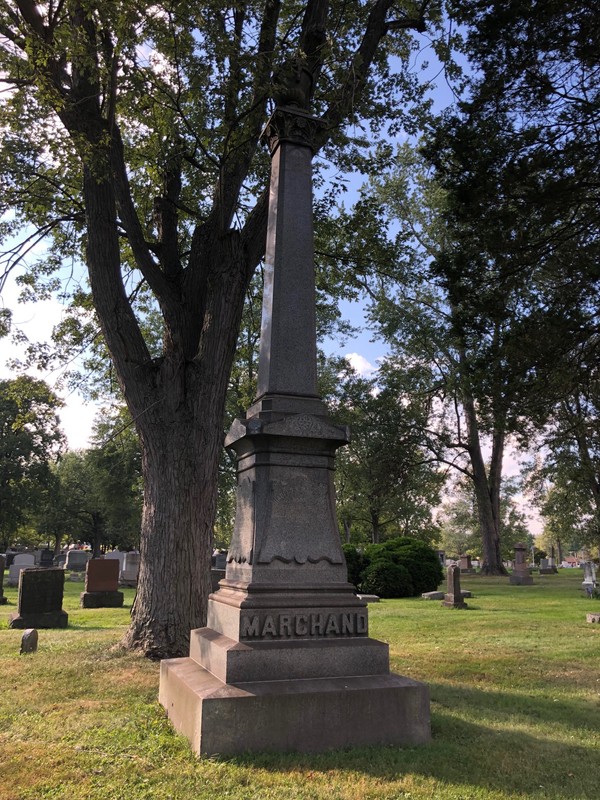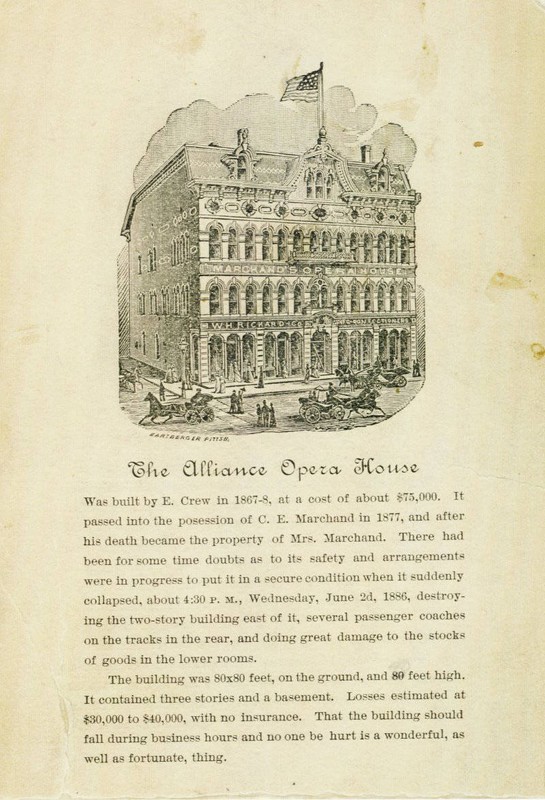Marchand Monument
Introduction
Author-Uploaded Audio
Listen to a narration of this entry's description by Alliance Historical Society.
Text-to-speech Audio
Charles Marchand was an investor who partnered with Thomas Rees Morgan, Sr. and helped him relocate his business from Pittsburgh to Alliance in 1871. Marchand & Morgan built their business along Mahoning Avenue, building steam hammers, punching and shearing machines, rail carts, gun and mortar carriages, cranes and other specialized heavy equipment.
In 1877, Marchand took ownership of Crew's Opera House, located at E. Main Street and Seneca Avenue. Marchand's Opera House collapsed in 1886.
Images
Marchand Monument

Handbill for Alliance Opera House

Backstory and Context
Text-to-speech Audio
Charles Marchand was an investor who partnered with Thomas Rees Morgan, Sr. and helped him relocate his business from Pittsburgh to Alliance in 1871. Marchand & Morgan built their business along Mahoning Avenue, building steam hammers, punching and shearing machines, rail carts, gun and mortar carriages, cranes and other specialized heavy equipment.
In 1877, Marchand took ownership of Crew's Opera House, located at E. Main Street and Seneca Avenue. Marchand's Opera House collapsed in 1886.
Sources
Weber, Jack. T. R. Morgan, Sr. put Alliance on industrial map, Alliance Historical Society. June 4th 2021. Accessed September 22nd 2021. https://alliancehistory.org/t-r-morgan-sr-put-alliance-on-industrial-map.
Alliance Opera House Handbill, Alliance Memory. Accessed September 22nd 2021. https://www.alliancememory.org/digital/collection/places/id/740/rec/3.
Photograph by Karen Perone
https://www.alliancememory.org/digital/collection/places/id/740/rec/7
